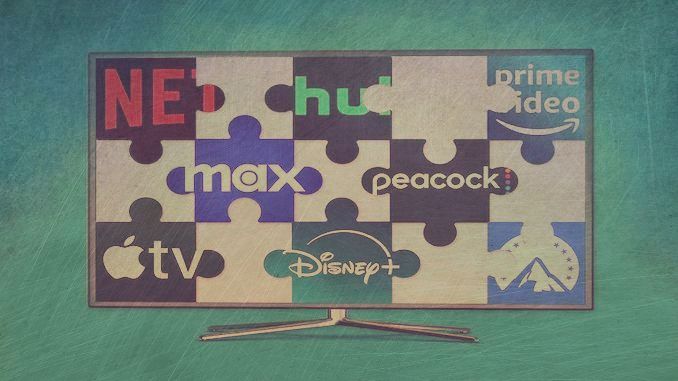
Film distribution and production disruptions caused by government lockdowns have accelerated many changes that were well underway in the market for years.
Whether justified or unmerited, the heavy-handed response marks a turning point in how projects are developed, packaged, and financed.
Perhaps the current health fears will abate in time, but based on an almost uniform adherence to curbs on individual freedoms, it will take many years before physical production and exhibition return to normalcy even under the best circumstances.
The Beginning of the End
In North America, the number of tickets sold hasn’t changed much since 1995. Likewise, in the UK, admissions have hovered around 170 million per year since 2005. Population increases in both countries mean yearly per capita admissions have decreased.
This decline is not attributable to the movie-going experience, as most exhibitors have invested heavily in improvements, including new audio-visual systems, more comfortable seating, expansive dining options, and even begrudgingly, by introducing subscriptions.
These admission declines have chiefly resulted from the monolithic nature of the studio film pipeline, which is full of comic book fare, juvenile action films, message-over-substance titles, and the deterioration of shared cultural heritage in the West.
A shrinking theatrical window has also challenged theater operators. Since 2000, the theatrical window in the US has shrunk by ten weeks. Many SVOD services are now owned or invested in by major studios, which reduces the incentive to maintain a long theatrical window and intensifies an increasingly competitive streaming environment.
If the lockdowns ever end, some studios armed with their own streaming services and cable platforms might skip the theater altogether.
Among enthusiastic producers and sales agents, there is a notion that there is pent-up demand for the cinema-going experience. While this might be the case in select European markets, overall, there is a sense of apathy towards the theater experience, especially with ever-growing politically-driven content that completely disregards quality storytelling.
In a recent survey of US theatergoers, nearly 40% of respondents said that they would go to the cinema less often in the future, and 10% said they might never go again.
Regardless, if cinemas return to normal in 2021, securing screening slots for independent films will be difficult given the backlog of big-budget Hollywood and European films collecting dust on the shelf.
European Production Rebound
Despite production delays and shutdowns, most independent films in Europe managed to wrap physical production in the spring and summer of 2020.
Many European-based international sales agencies will have full slates on offer at the virtual-EFM. Additionally, many agencies are representing numerous films currently in production and ready for the presale market.
Above all, sales agencies are anxious to reconnect with buyers to understand the demand in international markets after most cinemas worldwide have been shuttered to varying degrees for a year.
At the moment, film availability is not an issue, as there are plenty of finished films from 2019 and 2020 that haven’t been released. Instead, there is a severe lack of demand, especially for art-house and more obscure projects that buyers can’t place in streaming pipelines because of the glut of films vying for licensing deals.
Worldwide Film & Television Distribution Intelligence
Get unparalleled access to market intelligence reports that draw on financial data and insights from dozens of content distribution deals worldwide between key industry participants, including — Distributors, Producers, Broadcasters, MPVDs, Pay Television Providers, and Streaming Exhibitors.

Film and Series distribution rates and terms deriving from dozens of agreements for rights to transmit films and episodic television via PayTV and SVOD.
Choose flexible options for single-user PDF downloads.
Licensing Terms & Included Programs:
Pay-1 & SVOD Rate Cards for Motion Pictures and Series Exhibited Worldwide in Multiple Availability Windows
- Motion Pictures: Pay-1, First Run, Second Window Features, Recent Library Features (Tiers AAA,A,B,C), Library Features (Tiers AAA,A,B,C), Current and Premium Made-For-TV Films and Direct-To-Video Films, covering many license periods over the last decade
- Episodic TV: Current, Premium, Premium Catalog (1HR & 1/2HR), Catalog Series (1HR & 1/2HR), and Catalog Miniseries + Case Studies on Current Mega Hit, Catalog Mega Hit, and Premium Catalog, covering many licensing terms from 2012-2024
- Because most-favored-nation rates operate in practice, the rates and terms apply to a diverse range of content and distributors worldwide in multiple availability windows.
FilmTake Away
Due to diminishing content availability precipitated by production delays and cancellations, large programming gaps for films are emerging for traditional television networks and OTT platforms to fill over the next two years.
These disruptions present enormous opportunities for independent filmmakers and producers to create and program niche offerings to targeted audiences outside the confines of the mainstream media monoliths.
These opportunities might come at the cost of abandoning or drastically limiting the cinema experience. But, the goal for content creators should be the broadest possible dissemination of a film, not getting a limited theatrical release on a handful of screens.
Content Spending Slumps in the Post-Peak Television Era
After reaching unprecedented heights, the film and television market is now charting a more cautious path in the post-peak television era. Several recent forecasts shed light on the slowdown in television content spending, emphasizing the shift in priorities and austerity for major media companies.
Continue Reading Content Spending Slumps in the Post-Peak Television Era
Piecing Together the Future of Streaming: The Rise of Bundling and Aggregation
Recent developments in streaming, like Comcast’s StreamSaver bundling Peacock, Apple TV+, and Netflix, indicate a significant shift towards the future of entertainment: streaming bundles. The bundling trend is gaining traction at the top and bottom of the streaming market.
Continue Reading Piecing Together the Future of Streaming: The Rise of Bundling and Aggregation
Screens to Streams: The Evolution of Film Release Windows in Europe (Part Two)
Europe’s film sector has relied on territoriality and rigid release windows to maximize the economic potential of films. Part Two explores the EU’s capitulation to the major studios, the post-lockdown theatrical landscape, and public support rules to preserve traditional release windows.
Continue Reading Screens to Streams: The Evolution of Film Release Windows in Europe (Part Two)
Screens to Streams: The Evolution of Film Release Windows in Europe (Part One)
Europe’s film sector has long relied on the principles of territoriality and rigid release windows to maximize the economic potential of films. However, the unprecedented lockdowns during 2020 and 2021 have significantly disrupted these traditional models, which were already in flux.
Continue Reading Screens to Streams: The Evolution of Film Release Windows in Europe (Part One)



